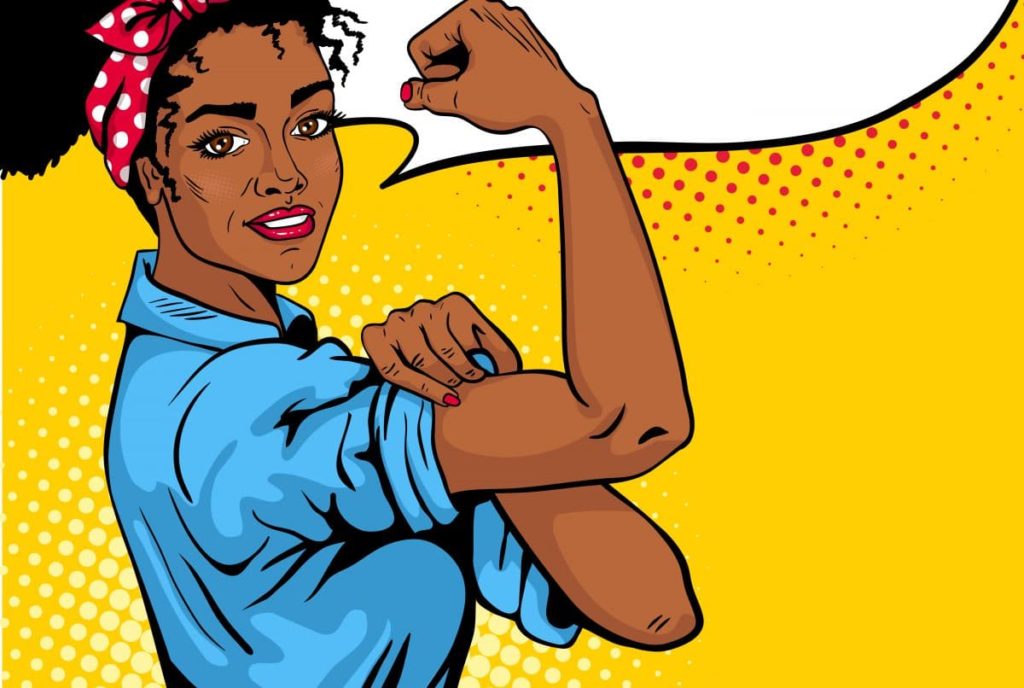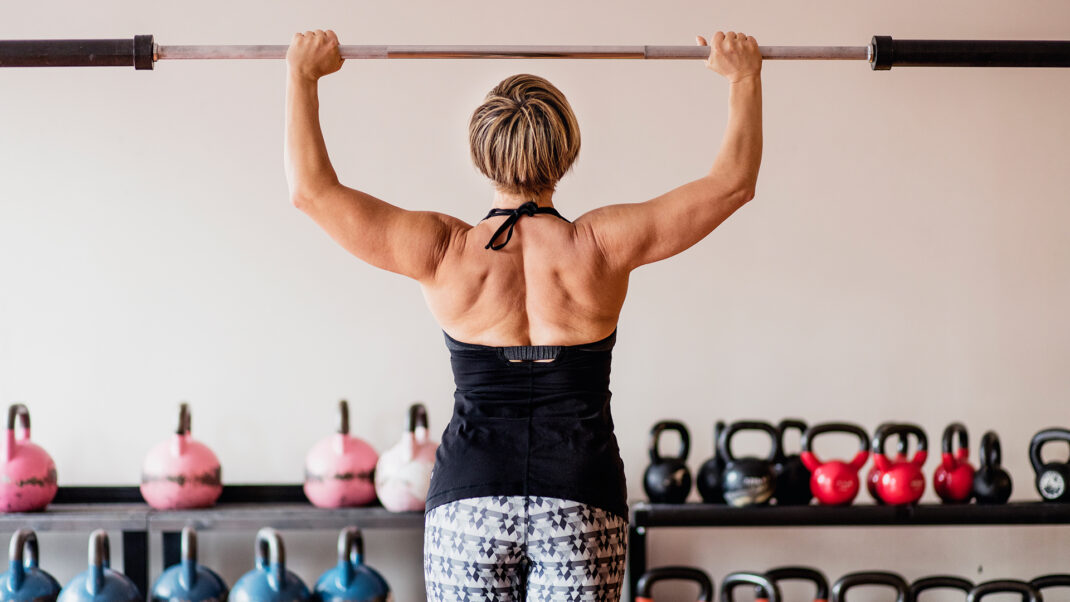Gender Equity in Fitness: Are We There Yet?
Most trainers and teachers are women, but most top execs are men. Here's how we can help to close that gap.

Who are the top bosses at the fitness clubs or companies where you spend your time? Is the CEO a woman or a man? Thinking about your own job, are you paid a comparable wage to others whose work is the same as or similar to yours? How would you know for sure?
Sizing up gender equity issues across industries, we observe that men typically dominate high-ranking business positions. And, yes, wage inequality between male and female employees is a thing. Public conversations like the #metoo and Time’s Up movements have helped shed light on professional challenges women face, including a strong desire for workplace equity, free from harassment and discrimination.
But how much do these issues affect gender equity in fitness, where women represent more than half the frontline workforce? Let’s investigate whether female fitness pros enjoy ample opportunities, recognition and pay compared with their male counterparts. This article is for women and men to read. When we unite to support advancements in the industry, we all move closer to our common goal of inspiring the world—that means everyone—to greater health, fitness and well-being.
Where Do Women Stand in the Fitness Industry?
The fitness industry first took off—with women leading the charge—when “dance aerobics” became popular. Group exercise is still largely female-focused, but the industry has branched out in many new directions, including personal training, which some people consider more of the domain of men. It’s a common stereotype to imagine a female instructor and a male trainer.
For example, advertisements or stock photos in blogs, on websites and in magazines often depict trainers as men and instructors as women. In the world of CEC education, many of the most celebrated personal training experts are men. But these gender generalizations don’t quite reflect what’s going on in the industry or mean there is gender equity in fitness.
Not surprisingly, stats from multiple certifying bodies confirm that fitness instructors are likely to be female. But women also make up the majority of personal trainers certified by four out of five major associations offering trainer certs (see “Breakdown of Male Versus Female Trainers and Instructors”).
So, what accounts for the male-trainer typecast? One explanation might be that personal training represents a serious, business-oriented aspect of fitness, which some people associate more easily with male characteristics. This perception is born out of traditional gender roles.
“Women are inextricably connected to child-rearing and thus associated with being caregivers: nurturing, gentle and forgiving,” says Ingrid Knight-Cohee, MS, director of group fitness for Steve Nash Fitness World & Sports Club in Vancouver, British Columbia. “These are not traditionally ideal attributes in the realm of fitness/sports or business leadership/ownership, where being firm, aggressive and intense are often considered necessary to succeed.” In reality, all these attributes have more to do with personality and coaching style than with gender.
Still, “there’s a stereotype that a no-nonsense male approach will yield better and faster results,” says Knight-Cohee. In some cases, female trainers must work harder to prove to clients (male and female) that they can train them at an appropriate level. When first marketing herself as a personal trainer, Samantha Cordova—owner and head trainer at MissFit Training in Alameda, California—says she had to “hustle more” to highlight her skills for clients who otherwise preferred a male trainer.
“I wasn’t about to sell out and start marketing sports-bra pics of myself to get attention for marketing purposes,” she says. “My focus was to get really good at personal training to help people and build a business out of it.”
Like Cordova, many women in the industry are serious about business ownership. For example, IHRSA’s 2018 Global Report states that Orangetheory® Fitness claimed top spot in 2017 for delivering the fastest-growing women-owned businesses in the United States—that included all industries, not just fitness. In spring 2018, the fitness franchise, founded by physiologist Ellen Latham, remained among the top five winners but moved to second place for the same distinction (WPO 2018).
Along similar lines, a survey conducted for the Association of Fitness Studios’ 2018 Fitness Studio Operating & Financial Benchmarking Report says that out of 565 fitness studio owners who responded, 52% were women (AFS 2018).
The future of women in business is promising, but there’s still work to do. Even as women manage much of the fitness frontline with training and instructing, their presence diminishes by the time you get to executive and senior leadership roles in many circles. If women generally outnumber men as industry service-providers, why aren’t more women also leading from the top?
See also: Diversity, Equity and Inclusion in Fitness: What’s Your Strategy?

Most Fitness CEOs Are Men
When it comes to the largest, wealthiest and/or most influential fitness businesses, a lack of gender equity in fitness becomes clear: women rarely hold a CEO or president title, according to information gathered from business publication Bloomberg.com and various companies’ online executive-team directories. Examining a cross-section of executives at 30 prominent fitness companies and club chains (major brands you’d see at industry expos and/or chains with numerous club/studio locations), only one CEO is a woman. Men hold the CEO and/or president title in the other 29 cases.
Branching out to executive positions such as chief financial officer, chief operating officer, vice president and other senior titles, women are listed more often, but men still outnumber women on most executive teams. Businesses pertaining specifically to women, such as prenatal and stroller-fitness programs, are the exception.
Encountering so few female CEOs in fitness is frustrating, but it’s hardly shocking. This has been society’s historical distribution of power. Data charted from Pew Research Center Social & Demographic Trends shows that women represented only 5.4% of CEOs at Fortune 500 companies in 2017 (it was 0.4% in 2000!) and just 20.2% of Fortune 500 board members in 2016 (Brown 2017).
The picture changes in middle management, where there are many more women (ILO 2015). This is true in the fitness industry, too—both in health clubs and at associations and companies. However, one global report indicates that women in various industries tend to occupy leadership positions in communications and human resources but are less represented in jobs like sales/operations manager and general manager, which can be natural pathways to upper managerial appointments (ILO 2015). Of course, there are always exceptions.
“We are not immune to these strongholds of tradition, but we are exceedingly capable of change and evolution,” says Knight-Cohee. “I think we are in the solid two-steps-forward, one-step-backward phase of growth, slowly but surely moving in the right direction.” Organizations such as the newly mobilized Women in Fitness Association help effect positive change by bringing women together in the fitness industry for support, mentorship, community and business resources. “The good news is that the more we raise the opportunity and present women with these roles, the more we can close the gap,” says WIFA founder and CEO Lindsey Rainwater.
Gender Equity in Fitness

Though gender bias and a lack of gender equity in fitness are a reality, reviews are mixed on how it manifests.
It should go without saying that women must be viewed as qualified and equal players in the fitness industry. They are unquestionably capable of leading successfully from the highest ranks. It’s also time to stop judging women’s worth in fitness by some ideal of a “fit” appearance. “One of the issues I’ve always found annoying as a female fitness pro is people thinking I’m a hired model in the booth at the tradeshow instead of somebody that’s actually working with the company based on my knowledge and talent,” says Ami McMullen, a TRX® master trainer, presenter and blogger at FitwithFlash.com based in Canmore, Alberta.
The industry’s tireless emphasis on appearance means women are sometimes scrutinized superficially, probably more so than men. “A female presenter is judged on a different scale by women compared to a male presenter,” says Tatiana Kolovou, MBA, presenter, faculty member for the Kelley School of Business at Indiana University and owner of Ethos Cycling, a boutique studio in Bloomington. “I have seen comments and feedback that are completely unrelated to the topic at hand (e.g., ‘You looked fit,’ ‘I like your hair,’ ‘Your voice was too high-pitched’). I doubt these comments would surface on a male presenter’s evaluations.”
Though gender bias and a lack of gender equity in fitness are a reality, reviews are mixed on how it manifests. “Having been in this industry for my entire career, I can say my personal experience has been one of equal opportunity and positive treatment,” says Knight-Cohee. “As I moved into managerial and supervisory roles, I was fortunate to have many terrific female mentors who demonstrated effective leadership that I strived to emulate.”
Irene Lewis-McCormick, MS, is the 2018 IDEA Fitness Instructor of the Year, an Orangetheory Fitness head coach and an adjunct faculty member at Drake University in Des Moines, Iowa. “In my experience,” she says, “men are offered more opportunities to advance over women, even if they have less education and experience.”
Maureen Hagan—vice president of program innovation and fitness development at GoodLife Fitness and canfitpro in Toronto—has been involved in the industry for 35 years as a fitness instructor, presenter, executive and businesswoman. She’s witnessed firsthand that female fitness professionals are regarded and treated differently—at times. “This is a result of how men and women assert themselves,” she says. “It is my observation that women who succeed possess a high level of self-confidence, self-awareness and assertiveness along with a resounding passion, a purpose, a persevering mindset and a proactive work ethic common among high performers in general.“
Hagan, who develops education curriculum for the fitness industry, has observed that men are more likely to put themselves forward as presenters, especially in personal training and business categories. To that point, McMullen recalls attending an overseas fitness conference featuring a dozen male presenters and just one female presenter. “I sought out the organizer during one of the breaks and asked about the discrepancy,” says McMullen. “He told me the one female speaker at the event had been the only woman to apply.”
The lessons are twofold. First, women must stand up, promote themselves and pursue new, exciting opportunities more often. “I think there are instances where women only put themselves out there for the type of work they think they can get as opposed to what they want to apply for,” says McMullen.
Hagan, a WIFA board member, says, “Gender equality in the fitness industry will be more a matter of who chooses to act on their own beliefs, confidence and ability and take the step forward to speak up, stand out and be heard.”
That said, the second lesson is that women and men in hiring and leadership roles must encourage gender diversity and gender equity in fitness, seeking out qualified female candidates when diversity doesn’t happen organically.
As more female fitness pros pursue opportunities they desire and are qualified for, they must also ensure that the pay reflects their skill, knowledge and workload.
We’re in the Dark About a Fitness Industry Gender Wage Gap
Last year, women in the U.S. earned 82% of what men earned, according to the Pew Research Center (Graf, Brown & Patten 2018). Based on this pay gap, the report states that it would take “an extra 47 days of work for women to earn what men did in 2017.” According to Statistics Canada, women earn 87 cents for every dollar earned by men (Moyser 2017). Incidentally, the Women’s Bureau at the U.S. Department of Labor notes that the gender wage gap among those with the most education exceeds the average wage gap for all workers (WB 2017).
Is there a gender wage gap preventing gender equity in fitness? Apart from individual anecdotes, we don’t really know. Multiple industry sources collect data on what kind of money trainers, instructors and managers make, but no one to date has tracked these numbers by gender. (It’s time to start.) However, one brave club chain—Total Fitness, with locations in England and Wales—published the company’s 11.36% gender-pay-gap data on its website, vowing to “improve our employee environment” (totalfitness.co.uk).
Understanding how industry wages are broken down is important. The more enlightened women and men are about where we all stand on pay and other work perks, the better we can negotiate fair—and, quite honestly, more profitable—wages. While the industry is in the dark about whether male and female fitness pros earn comparable wages for comparable work, we can look at the big picture and extrapolate a few key clues that speak to gender disparity and a lack of gender equity in fitness.
For example, the chart (above) illuminates that a good majority of trainers and instructors are women. So, what do these jobs pay? The Bureau of Labor Statistics, part of the U.S. Department of Labor, reports that the median (i.e., middle-ground) pay for fitness trainers and instructors is a little more than $39,200 per year, or $18.85 per hour (BLS 2018).
Other reports cite higher rates, but what’s interesting is how industry wages have—or have not—changed over time. It seems gender might play a role. According to a 2007 employee compensation and benefits survey by the International Health, Racquet & Sportsclub Association, personal trainers and fitness instructors made $25 per hour a decade ago (IHRSA 2007). Last year, the association reported that full-time trainers averaged $29.30 per hour (or $24.80 per hour for part-time) and full-time instructors averaged $27.06 per hour (less for part-time) (IHRSA 2017). Doing the math, that’s a pay increase of around $2–$4 an hour over an entire decade. Extremely underwhelming. If you apply that time span differential to an annual salary based on personal training 40 hours a week, 50 weeks in a year, it’s about $50,000 in 2007 and $58,600 in 2017. Meanwhile, health club membership grew by 33.6% from 2008 to 2017, pushing industry revenue to $87.2 billion last year (IHRSA 2018).
Now, we don’t know if any of the wages cited above differ between men and women, just that a lot of women happen to occupy the job categories of trainer and instructor. Also, wages cited from the two IHRSA reports reflect a good portion of health club workers in the central U.S. Self-employed trainers and those in other parts of the country (or other countries) might charge and receive more. Trainers and instructors at other facility types, like specialty studios, perhaps enjoy a healthier earning potential.
Education and certification might also make a difference, although it depends. An ACSM-affiliated survey of more than 800 practicing clinical exercise physiologists comprising 68% women, mostly working full-time, showed a median annual salary of $47,501–$50,000. Holding a clinical exercise certification did increase income; however, 92% percent of respondents also reported having a bachelor’s degree or higher, with 67% of that group holding a master’s degree (Kerrigan et al. 2017). Even with these credentials, the pay rates appear comparable to those of health club trainers.
Taking all this into account, there are additional matters to unpack here. In contrast to the stagnant stats cited above, IHRSA’s reports show that in the same period of 2007–2017, annual compensation for health club CEOs, a male-dominated position, almost doubled from $95,000 to $180,962. In middle management, general managers’ compensation rose from $70,000 in 2007 to about $90,000 in 2017. Group exercise/aerobics directors were making $29,780 in 2007 and $41,535 in 2017.
With that in mind, when was the last time you negotiated your compensation package and other on-the-job incentives? As you bank experience, improve skills and keep up with education, expect decent financial growth.
See also: Increasing Employee Diversity and Inclusion
Negotiate for What You’re Worth

Not only do women avoid negotiating; it might not even be on their radar.
Here’s a hunch: Established businesspeople entering the fitness workforce from other industries—including YouTube and Instagram “stars”—aren’t settling for fees that many up-and-coming and lifelong fitness pros readily accept. They pinpoint their value and negotiate accordingly.
Although the fitness industry puts a lot of worth on education and skill, it’s unfortunately not always known for generous compensation to the average service-provider, male or female. “It seems that as female fitness pros build their 10,000 hours toward experience and expertise, many still struggle to pay the bills,” says Petra Kolber, keynote speaker and author of The Perfection Detox (De Capo Lifelong Books 2018). “If you are at the peak of your career as a fitness leader but still being paid approximately the same fees as when you started, there’s something wrong,” she says. In any profession, it’s good to negotiate your job’s starting fee, raises and/or more desirable work parameters. Evidence shows men negotiate a lot more than women (Babcock & Laschever 2008).
Understandably, negotiating can feel awkward or intimidating. “The ability to say what you want and ask for it without apology is a historically difficult conversation to have,” says Rainwater. This seems to be especially true for women. “I believe women shy away from conflict due to a fear of being perceived as difficult to work with, or for a fear of not getting the job if they push back and truly ask for what they want,” says Lewis-McCormick.
These hesitations are compounded by the fact that women tend to undervalue their professional worth compared with men. A study cited in Ask for It (Bantam Books 2008)—a book about how women can use the power of negotiation—showed that women’s estimates of fair pay for first jobs were 4% lower than men’s estimates and 23% lower than those of men for career-peak pay (Babcock & Laschever 2008; Jackson, Gardner & Sullivan 1992).
Not only do women avoid negotiating; it might not even be on their radar. “If you have the ability to negotiate, never take the first offer,” says Doris Thews, vice president of group fitness, team training and innovation at VASA Health Clubs, based in Colorado. “Negotiate a deal that inspires you to go big and deliver beyond the employer’s expectation.” Thews points out that “going big” might extend beyond money to flex time, the ability to work from home, educational allowances, an executive job title, the chance to lead a project you’re passionate about, etc. “It’s about quality of life,” she says. Women tend to take on multiple roles outside of work and spend more time on housework and childcare than men, so negotiating acceptable on-the-job terms is especially important (Moyser 2017). “You can’t serve if you aren’t balanced,” says Thews.
To that end, assess your bargaining power and, if needed, work with your current or potential employer to arrive at strategic solutions. “Salary negotiations can seem difficult because of their fixed-pie nature—a dollar more for one party is a dollar less for the other,” says Catherine Tinsley, PhD, professor at Georgetown’s McDonough School of Business in Washington, D.C. “The solution is to open up the negotiation by adding other issues.” For example, ask for a bonus, stock, health insurance, vacation benefits, etc.
“When I started asking for higher fees, they were accepted,” says McMullen. “But I also had the guts to ask and the credentials to back up my knowledge.” Women have to get comfortable with “tooting their own horn,” says Knight-Cohee. And, of course, there’s research to do before going into any negotiation. “What is your job description, and what have your contributions and achievements been?” says Knight-Cohee. “How have you exceeded expectations? What is your actual worth to your organization? If you’re aware of comparable positions earning higher salaries, state your case with facts and objectivity.” For more guidance on negotiating, see “Strategies for Successful Negotiations,” below.
Finally, to the women and men leading from the top who can grant new opportunities and raises to those who respectfully and justifiably ask, be hyperaware of your role in mentoring and empowering others. “The best thing women in powerful positions can do is model the behavior they are coaching women to do,” says Tinsley. “Negotiators should be friendly and respectful while simultaneously being steadfast about any issues that they feel are worth negotiating. You can be unapologetic about asking but still be polite and courteous while asking.”
“Send the elevator back down once you’ve made it to the top,” adds McMullen. “We all benefit when we come from a place of community, not competition.”
Looking Ahead as Female Fitness Pros Empower Themselves and Others
There is power in community, and the fitness industry has no shortage of men and women who care to make a positive and lasting difference in people’s lives. What can we do to keep progressing at a decent pace in the right direction and ensure gender equity in fitness? For those who’ve been in the industry for a while, Thews recommends mentoring and pulling up the next generation. “Find your replacements and share your wisdom,” she says. “Our goal should be to make the industry better when we leave than when we arrived.”
We are on that path. “When you get the opportunity to help another woman, do it,” adds Rainwater. “There are more than enough opportunities and experiences for all the talented and incredible women in our industry, so let’s champion each other and support the shared success.”
For those just entering the fitness industry, take your business seriously, advises Lewis-McCormick. “Ask for what you want, and then deliver,” she says. “Surround yourself with other successful women who lift you up!” In Cordova’s experience, it’s about creating meaningful connections. “When I meet a female trainer and hear her story, we normally have a connection about why we do what we do. That is what gets us excited and willing to help and support each other,” she says. “When you connect on those levels, it is way easier to cheer on other women, because true success in the fitness industry is about our message and what we do to help people.”
As you lift up others, be sure to advocate for yourself, as well. Make your ambitions known. Voice your desire to grow, advance and develop your career. “Few things are more exciting from a manager/owner’s perspective than being constantly reminded of a team member’s enthusiasm and capacity,” says Knight-Cohee. “If you are good at what you do, you may be surprised at how an employer may alter what has been typical of the past in order to accommodate an exceptional employee.”
Says Kolovou, “My key message to women is to find your values and your priorities and then to design your life and your career around them.” Assemble an “advisory board” of strong women willing to share ideas and advice—this is what Kolovou has done. “You can have it all, maybe not all at the same time, but it is possible,” she says. “You can carve your own path.”
Finally, find your community—women and men who are willing to participate in positive change and empowerment for everyone. “Actively reach out to one another,” says Knight-Cohee. “Not just to women for women, but include men in the conversation.”
Open-minded and aware men are part of the solution when it comes to building a more inspired industry for all. However, the movement is already well underway and will continue to gain momentum with a myriad of resilient, ambitious, community-driven women in the lead. “Now is the time for women in the fitness industry to come together,” says Hagan, “to celebrate both our individuality and our strengths, as a network of dynamic female influencers and businesswomen.”
See also: Creating Inclusivity in Fitness Spaces
Strategies for Successful Negotiations
Catherine Tinsley, PhD, professor at Georgetown’s McDonough School of Business, shares three key strategies for negotiating more pay and/or other work benefits. Tinsley is an expert on the gender pay gap, gender dynamics in the workplace and interventions to promote women’s leadership.
- Research your value. Knowing how much you should be paid gives you confidence to ask for it. Search for objective standards to evaluate your salary. For example, what do others in this position make? What do others in this company make?
- Negotiate with yourself. Consider variables beyond a specific dollar amount. These can be easily monetized issues (variable pay, health insurance, retirement, education) or more intangible issues (work schedule, travel assignments).
- Develop multiple scenarios and practice them with a friend. Good negotiators have multiple strategies and options for getting high-value deals. Practicing will develop your ability to think on your feet and problem-solve around unanticipated responses while remaining calm and gracious.
Recommended Resources
- Women in Fitness Association (WIFA), womeninfitness.org
- Lean In: Women, Work, and the Will to Lead by Sheryl Sandberg
- Ask for It: How Women Can Use the Power of Negotiation to Get What They Really Wantby Linda Babcock and Sara Laschever (also authors of Women Don’t Ask)
- Playing Big: Find Your Voice, Your Mission, Your Message by Tara Mohr
Also seek out events that can help you build skill and confidence. Numerous conferences offer panels, precons and longer programs designed to help women recognize their influence and community while pursuing opportunities in the industry. Examples include the IDEA Women’s LeadHER Conference, canfitpro’s Women Who Influence and IHRSA’s annual Women’s Leadership Summit.
References
AFS (Association of Fitness Studios). 2018. Fitness Studio Operating & Financial Benchmarking Report. Accessed July 23, 2018: member.afsfitness.com/content/2017-operating-and-financial-benchmarking-report.
Babcock, L., & Laschever, S. 2008. Ask for It: How Women Can Use the Power of Negotiation to Get What They Really Want. New York: Bantam Books.
BLS (Bureau of Labor Statistics). 2018. Fitness trainers and instructors. Occupational Outlook Handbook. Accessed July 23, 2018: bls.gov/ooh/personal-care-and-service/fitness-trainers-and-instructors.htm.
Brown, A. 2017. The data on women leaders. Accessed July 23, 2018: pewsocialtrends.org/2017/03/17/the-data-on-women-leaders/#board-members.
Graf, N., Brown, A., & Patten, E. 2018. The narrowing, but persistent, gender gap in pay. Fact Tank. Accessed July 23, 2018: pewresearch.org/fact-tank/2018/04/09/gender-pay-gap-facts/.
IHRSA (International Health, Racquet & Sportsclub Association). 2007. Employee Compensation & Benefits Survey Results for the Commercial Health & Fitness Industry, 2007. Accessed July 23, 2018: ihrsastore.com/p-3555-2007-ihrsa-employee-compensation-benefits-report-full-pdf-download.aspx.
IHRSA 2017. IHRSA Health Club Employee Compensation & Benefits Report, 2017. Accessed July 23, 2018: ihrsastore.com/p-5415-the-2017-ihrsa-health-club-employee-compensation-benefits-report-part-3-hourly-club-level-employees.aspx.
IHRSA 2018. IHRSA Global Report 2018: The State of the Health Club Industry. Accessed July 23, 2018: ihrsa.org/about/media-center/press-releases/ihrsa-2018-global-report-club-industry-revenue-totaled-87-2-billion-in-2017.
ILO (International Labour Organization). 2015. Women in Business and Management: Gaining Momentum. Accessed July 23, 2018: ilo.org/wcmsp5/groups/public/—dgreports/—dcomm/—publ/documents/publication/wcms_334882.pdf.
Jackson, L.A., Gardner, P.D., & Sullivan, L.A. 1992. Explaining gender differences in self-pay expectations: Social comparison standards and perceptions of fair pay. Journal of Applied Psychology, 77 (5), 651–63.
Kerrigan, D.J., et al. 2017. CEPA 2015 Clinical Exercise Physiology Practice Survey. Journal of Clinical Exercise Physiology, 6 (1), 9–16. Accessed July 23, 2018: acsm-cepa.org/content.aspx?page_id=22&club_id=324409&module_id=290202.
Moyser, M. 2017. Women and paid work. Accessed July 23, 2018: 150.statcan.gc.ca/n1/pub/89-503-x/2015001/article/14694-eng.htm.
WB (Women’s Bureau, U.S. Department of Labor). 2017. Women’s Earnings and the Wage Gap. Accessed July 23, 2018: dol.gov/wb/resources/Womens_Earnings_and_the_Wage_Gap_17.pdf.
WPO (Women Presidents’ Organization). 2018. 50 fastest-growing women owned/led companies announced by Women Presidents’ Association. Accessed July 23, 2018: prnewswire.com/news-releases/50-fastest-growing-women-ownedled-companies-announced-by-women-presidents-organization-300638423.html.
Amanda Vogel, MA
Amanda Vogel, MA, is a fitness professional and the owner of Active Voice, a writing, editing and consulting service for fitness professionals. She writes for IDEA, Health, Prevention, and Self, and has co-authored books on postnatal fitness and yoga. With a master's degree in human kinetics, Amanda has worked in the fitness industry for more than 15 years, including time spent as a program director and vice president for a chain of all-women clubs in Vancouver, British Columbia.






